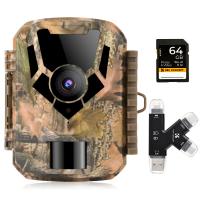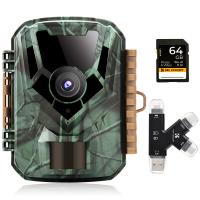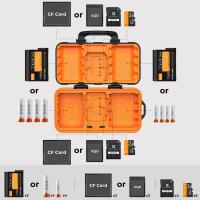How Long Does A Sd Card Last?
Understanding the Lifespan of SD Cards: Practical Insights and Tips for Longevity
In the digital age, Secure Digital (SD) cards have become indispensable for storing data in a variety of devices, from cameras and smartphones to tablets and even some laptops. However, one common question that arises among users is: "How long does an SD card last?" This question is crucial, especially for those who rely heavily on these storage devices for important data. In this article, we will delve into the factors that influence the lifespan of SD cards, provide practical tips for extending their longevity, and address common concerns related to their usage.
Factors Influencing the Lifespan of SD Cards

1. Quality of the SD Card
The quality of an SD card plays a significant role in its lifespan. High-quality SD cards from reputable manufacturers tend to last longer than cheaper, lower-quality alternatives. These premium cards are often built with better materials and undergo rigorous testing to ensure durability and reliability.
2. Usage Patterns
How frequently and intensively an SD card is used can greatly affect its lifespan. Cards that are used for high-definition video recording, for instance, experience more wear and tear compared to those used for storing occasional photos or documents. Continuous writing and rewriting of data can degrade the memory cells over time.
3. Environmental Conditions
Environmental factors such as temperature, humidity, and exposure to physical stress can impact the longevity of an SD card. Extreme temperatures, both hot and cold, can cause the card to malfunction. Similarly, exposure to moisture or physical damage can lead to data corruption or complete failure.
4. Storage Capacity and Wear Leveling
SD cards with larger storage capacities generally have a longer lifespan because they distribute the wear and tear across more memory cells. Additionally, many high-quality SD cards come with wear leveling technology, which helps to evenly distribute the data writes across the card, thereby extending its life.
Practical Tips for Extending the Lifespan of Your SD Card

1. Choose High-Quality SD Cards
Investing in a high-quality SD card from a reputable brand can save you from potential data loss and the need for frequent replacements. Look for cards that offer good read/write speeds and come with a warranty.
2. Avoid Frequent Formatting
While formatting an SD card can help in maintaining its performance, doing it too frequently can reduce its lifespan. Instead, consider deleting unnecessary files manually and only format the card when absolutely necessary.
3. Safely Eject the Card
Always use the "eject" or "safely remove hardware" option before removing the SD card from a device. This ensures that all data transfers are complete and reduces the risk of data corruption.
4. Store in a Safe Environment
Keep your SD cards in a protective case when not in use. Avoid exposing them to extreme temperatures, moisture, or physical shocks. If you need to store them for an extended period, choose a cool, dry place.
5. Regular Backups
Regularly backing up the data on your SD card can save you from potential data loss. Use cloud storage or an external hard drive to keep copies of important files.
Addressing Common Concerns

1. How Long Can I Expect My SD Card to Last?
The lifespan of an SD card can vary widely based on the factors mentioned above. On average, a high-quality SD card can last between 5 to 10 years with moderate use. However, cards used for intensive tasks like 4K video recording may have a shorter lifespan.
2. What Are the Signs of a Failing SD Card?
Common signs of a failing SD card include frequent errors during data transfer, files becoming corrupted or unreadable, and the card not being recognized by devices. If you notice any of these signs, it’s advisable to back up your data immediately and replace the card.
3. Can I Repair a Corrupted SD Card?
In some cases, a corrupted SD card can be repaired using data recovery software or by reformatting the card. However, these methods are not always successful, and there is a risk of losing data. It’s best to consult a professional data recovery service if the data is critical.
Understanding the factors that influence the lifespan of an SD card and taking proactive steps to care for it can significantly extend its usability. By choosing high-quality cards, avoiding frequent formatting, safely ejecting the card, storing it properly, and regularly backing up data, you can ensure that your SD card serves you well for years to come. While no storage medium is infallible, being informed and prepared can help mitigate the risks and keep your data safe.
In the ever-evolving world of digital storage, staying updated with the latest advancements and best practices is key. Whether you are a professional photographer, a videographer, or simply someone who values their digital memories, understanding how to maximize the lifespan of your SD card is an essential skill. By following the guidelines outlined in this article, you can make informed decisions and enjoy the peace of mind that comes with knowing your data is secure.

















